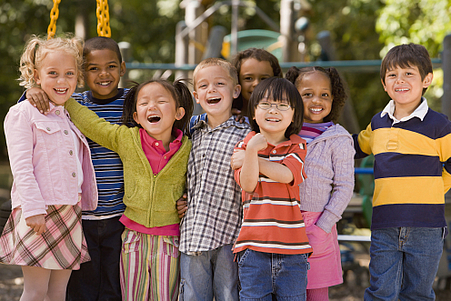 Teacher trainer, Freia Layfield, offers some practical ideas to bring CLIL into the young learner classroom.
Teacher trainer, Freia Layfield, offers some practical ideas to bring CLIL into the young learner classroom.
Categorisation tasks (science)
Bring a selection of flashcards to class. Draw two large circles on the board. Label them with two different categories. For example, fruit / dairy, plastic / paper, animals / plants. You can use more challenging categories for older students, like living / non-living. Ask individual students to place a flashcard into the correct circle on the board. If the students are older and able to read and write, you can ask them to write the name of the thing in the correct circle. As a group, the students can then check and decide if the flashcards are in the correct circles or not.
Measure it or weigh it (maths)
Ask the students to measure or weigh a number of objects in class that are related to a topic you are studying. For example, weigh classroom objects or measure hands, feet and height. Ask students to draw and record their results. Allow them to work in pairs. Each pair can share their answers with the class. This exposes them all to a lot of English and develops their maths skills.
Magazine collages (art)
Bring a selection of old magazines to class, or ask the children to bring in one each. If possible, the magazines should be related to a topic you are teaching. For example, home and garden magazines if you are looking at houses, holiday magazines or brochures if you are studying countries and holidays, or wildlife magazines if you’re looking at animals and the environment. Put the students into pairs and give each pair a piece of paper. Ask the students to cut out, and stick onto the paper, pictures that are connected to a topic. For example, Places you want to go to or Animals you like. Students can share these collages with the class and talk about the pictures they have chosen. This works well with all ages.
Internet research and peer teaching (social science)
This works very well with slightly older children. Divide the class into small groups of 2–3 students. Give each group a different research topic. For example, if you’re studying animals, assign each group a country to research. They should work together to identify 3–4 animals in that country and then find out a fact about each animal. For example: The Kangaroo is a marsupial. It carries its baby in a pouch. Students can print pictures or download them onto a memory stick to show the other students in class. Each group then gets a chance to present their new knowledge, in English, to the rest of the class.
Would you like more practical tips on using CLIL with your young learners? Head over to the Oxford Teachers’ Club for ideas and teaching tools for young, and very young learners. Not a member? Sign up here – Ii’s easy and free.


I know this if off topic but I’m looking into starting my
own blog and was wondering what all is needed to get setup?
I’m assuming having a blog like yours would cost a pretty penny?
I’m not very web smart so I’m not 100% positive. Any suggestions
or advice would be greatly appreciated. Many thanks
Just wish to say your article is as surprising.
The clearness in your post is just great and i could assume you’re an expert on this subject.
Fine with your permission allow me to grab your
feed to keep updated with forthcoming post. Thanks a million and please
keep up the gratifying work.
[…] Read full article. […]